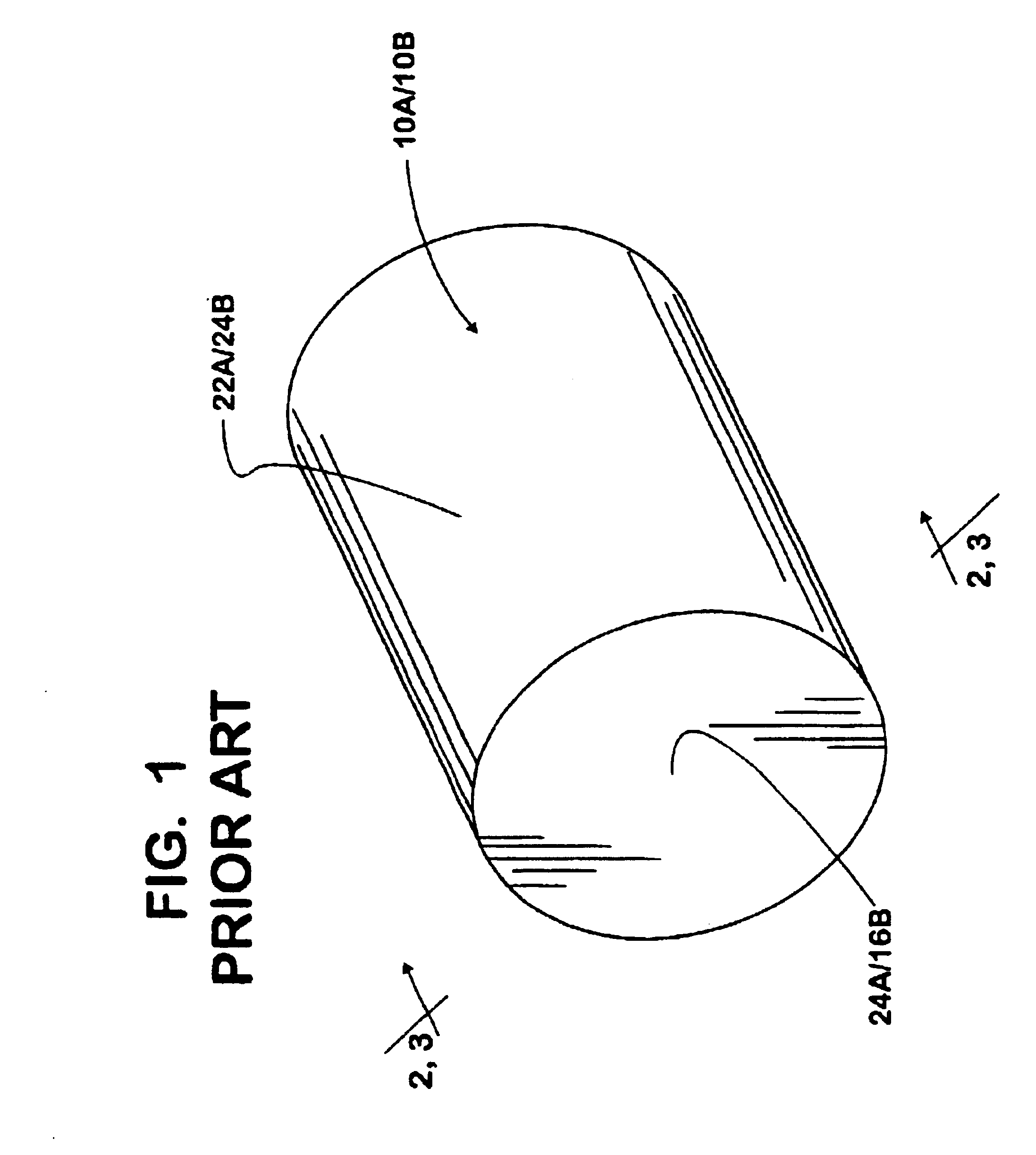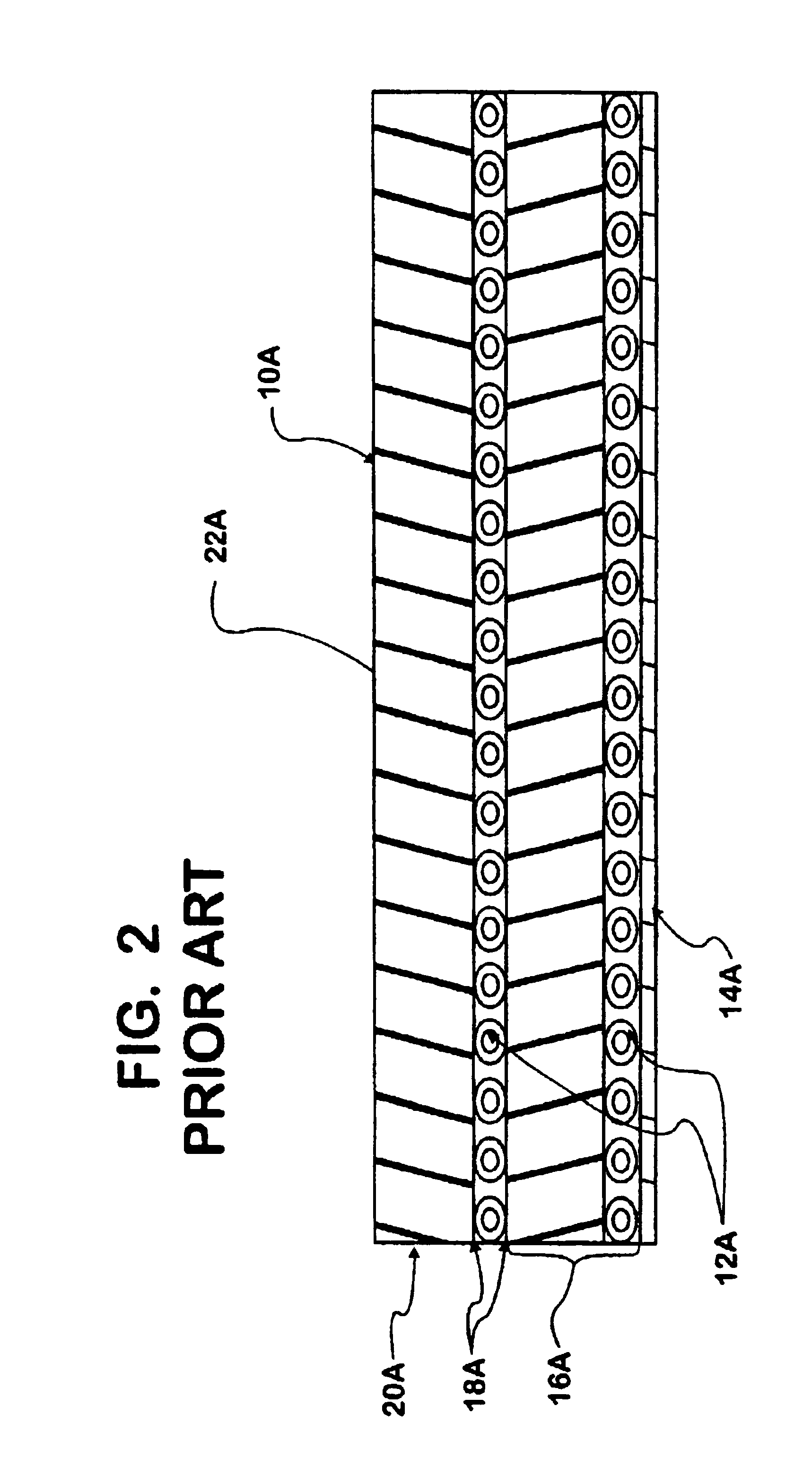Seamed sleeved blanket and method for making and using same
a technology of sleeve blankets and sleeves, applied in the field of sleeve blankets and methods for making and using same, can solve the problems of slowing down the production rate, uneven and overbuilt compressible layers, and requiring grinding to the required dimensions, so as to avoid registration and print length issues, and negligible effect of print length and gap boun
- Summary
- Abstract
- Description
- Claims
- Application Information
AI Technical Summary
Benefits of technology
Problems solved by technology
Method used
Image
Examples
Embodiment Construction
A schematic drawing of the seamed sleeved blanket 40 produced according to this invention can be seen in FIGS. 4 through 7. As shown in FIG. 6, according to this invention a conventional, flat offset printing blanket material 42 may be manufactured by methods well known to the art or purchased in roll form and cut to specific dimensions so that it can be wrapped (as indicated by the large arrows) as a solid sheet around a continuous supporting sleeve 44 to produce the seamed sleeved blanket 40 of the present invention and shown in FIG. 4, the gap or sewn being given numeral 45. Referring to FIG. 5, preferably the following construction method can be used. The blanket material 42 could be of any desired commercially available structure and could have a rubber surface 46, say 0.023 inches thick over a first outer fabric layer 48 (reinforcement), say 0.009 inches thick, over a compressible layer 50, say 0.014 inches thick, over a middle fabric layer 52 (reinforcement), say 0.011 inches...
PUM
 Login to View More
Login to View More Abstract
Description
Claims
Application Information
 Login to View More
Login to View More - R&D
- Intellectual Property
- Life Sciences
- Materials
- Tech Scout
- Unparalleled Data Quality
- Higher Quality Content
- 60% Fewer Hallucinations
Browse by: Latest US Patents, China's latest patents, Technical Efficacy Thesaurus, Application Domain, Technology Topic, Popular Technical Reports.
© 2025 PatSnap. All rights reserved.Legal|Privacy policy|Modern Slavery Act Transparency Statement|Sitemap|About US| Contact US: help@patsnap.com



